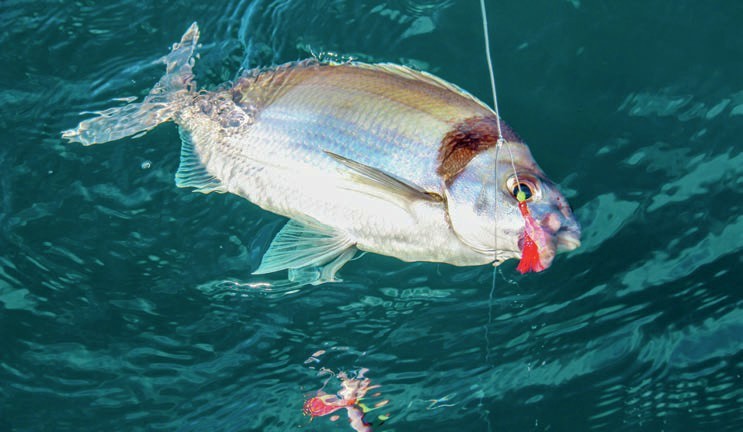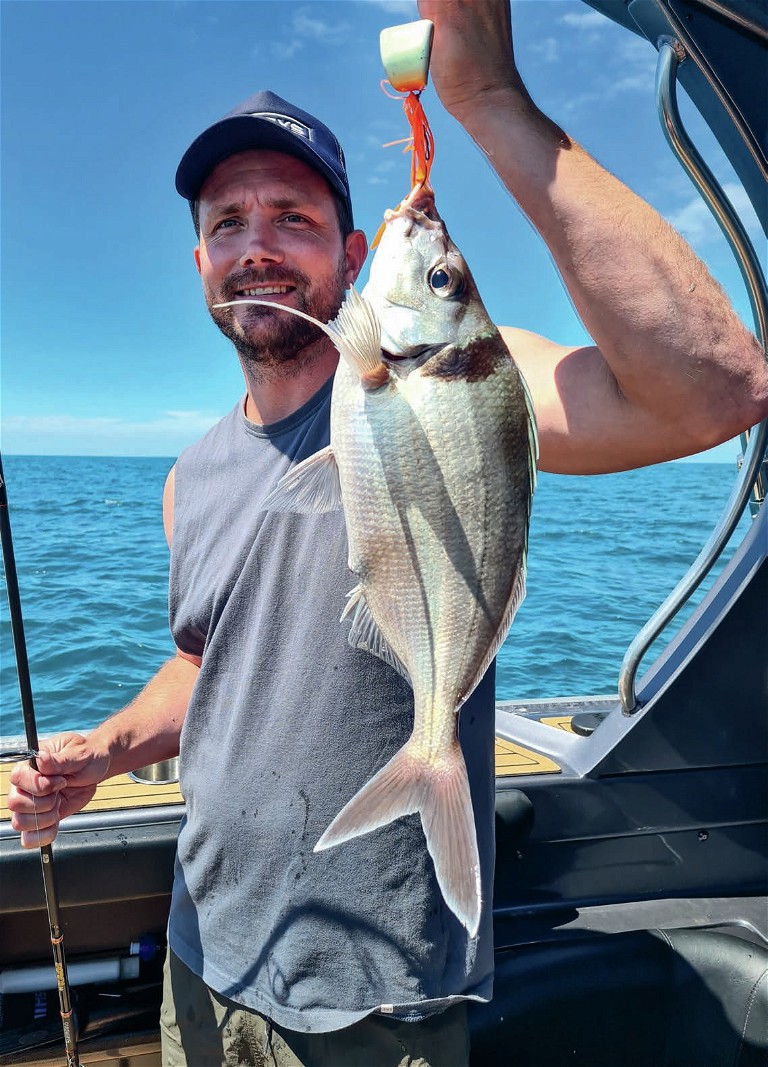TARAKIHI
Description
Tarakihi are popular table fish targeted by anglers throughout New Zealand, especially in areas where they are more prevalent (Bay of Plenty, Poverty Bay, Hawke’s Bay, Wellington, and the South Island). Their silver colouring features a distinctive vertical dark band between the head and dorsal fin. Tarakihi have small mouths with soft lips, helping them suck invertebrates from the bottom. They are small fish (averaging around 1kg) and long-lived, not reaching sexual maturity until six years of age, making them susceptible to overfishing in heavily-trawled areas such as Hawke’s Bay.
Tarakihi can reach weights of over 4kg in places such as the King, Middlesex, and Ranfurly Banks, although fish of this size tend to be the ‘king’ tarakihi subspecies, which has a less distinct black saddle on its shoulders.

Where to catch
A fish that schools close to the seafloor, tarakihi are usually found over areas of reef and other structure immediately adjacent to the sand or mud where they like to feed. They are commonly found between depths of 30-250m but can be found much shallower in more southern climes like Fiordland.
Interestingly, tarakihi seem to be most abundant around the East Cape’s soft-mud bottoms, where they often form large schools, yet the bigger ones are often encountered while fishing more reefy terrain. Possibly this is because the tarakihi out on the sand and mud are easily trawled, so tend not to reach the same size.
As tarakihi form decent-sized schools, they can be reasonably easy to detect on a fishfinder. However, because they school in a very localised manner, it is a much trickier task to position your boat so your baits end up amongst them once anchored.

When to catch
Fortunately, tarakihi are a viable proposition in many areas year-round, with only the depth varying according to the seasons. In more northern areas like the Bay of Plenty, they move into water as shallow as 20m in winter, whereas summer sees many of them out near the continental shelf in 100-200m of water. However, in other locations this trend seems to be reversed – for example, in Poverty Bay, they become more abundant close to the coastline through summer.
How to catch
Tarakihi are best targeted using a ledger rig with braided line. This setup will quickly get baits down to where the tarakihi are schooling and keep the line taut for good bite detection and positive hook-ups. Because tarakihi have small mouths and a varied diet of small crustaceans, worms, and shellfish, small hooks (1/0-3/0 circle hooks) and baits are essential.
Small lures, such as sliders, can be used to target tarakihi, but baits are far more effective. While most tarakihi fishers prefer shellfish baits such as tuatua and pipi, these are not always easy to procure and, unless toughened up by steaming or salting, are easily removed from the hooks. Luckily, small squid and skipjack strip baits usually do the job well. A weighted berley system can also help get the tarakihi on the chew.
Tarakihi are inclined to nibble at the bait in a way that transmits a jiggly motion to your rod tip, and they often swim upwards upon taking a bait. Therefore, it helps to wind in any slack line before attempting to set the hook.
For more information and related articles check out our new Export How to Catch page
